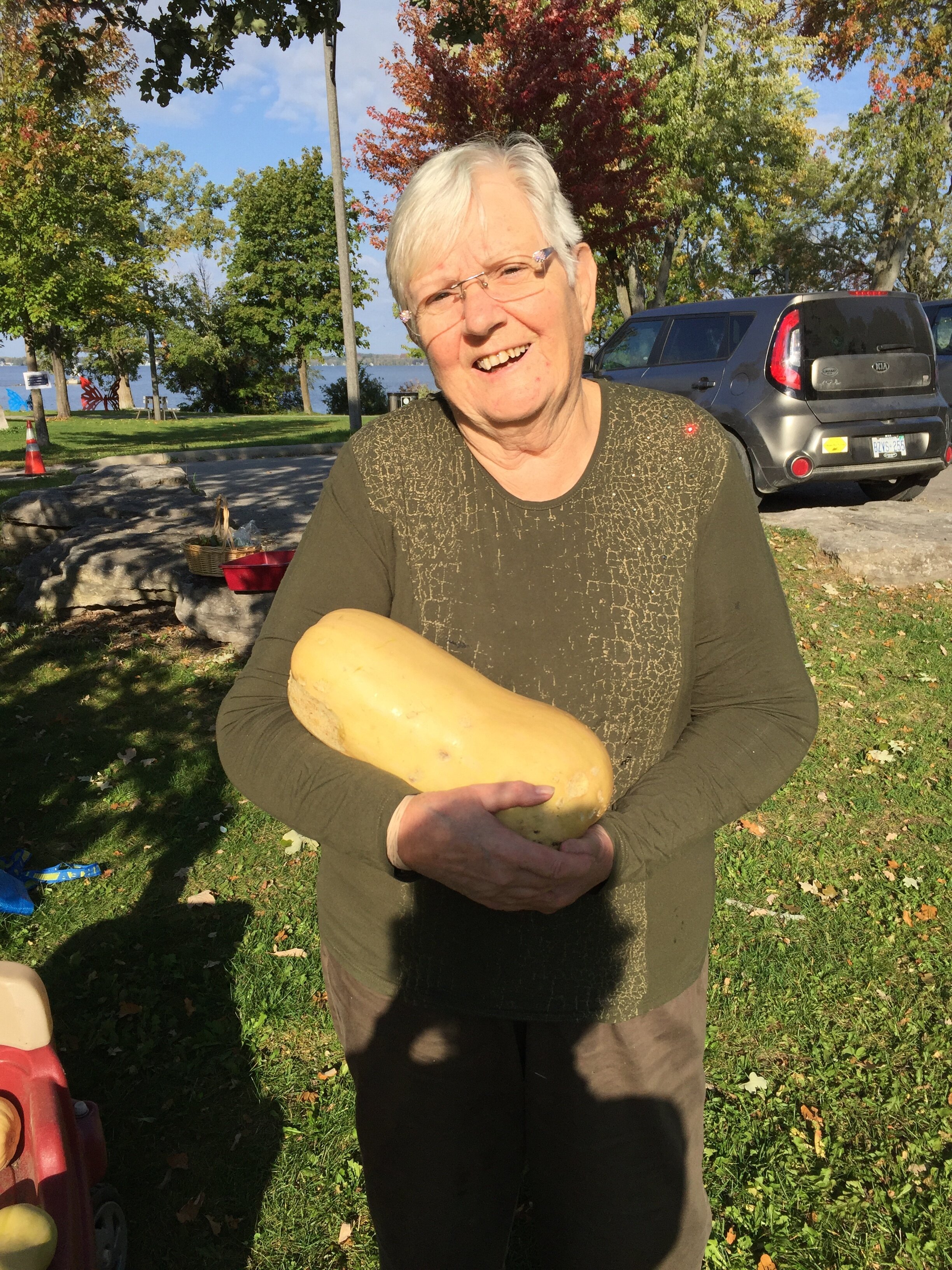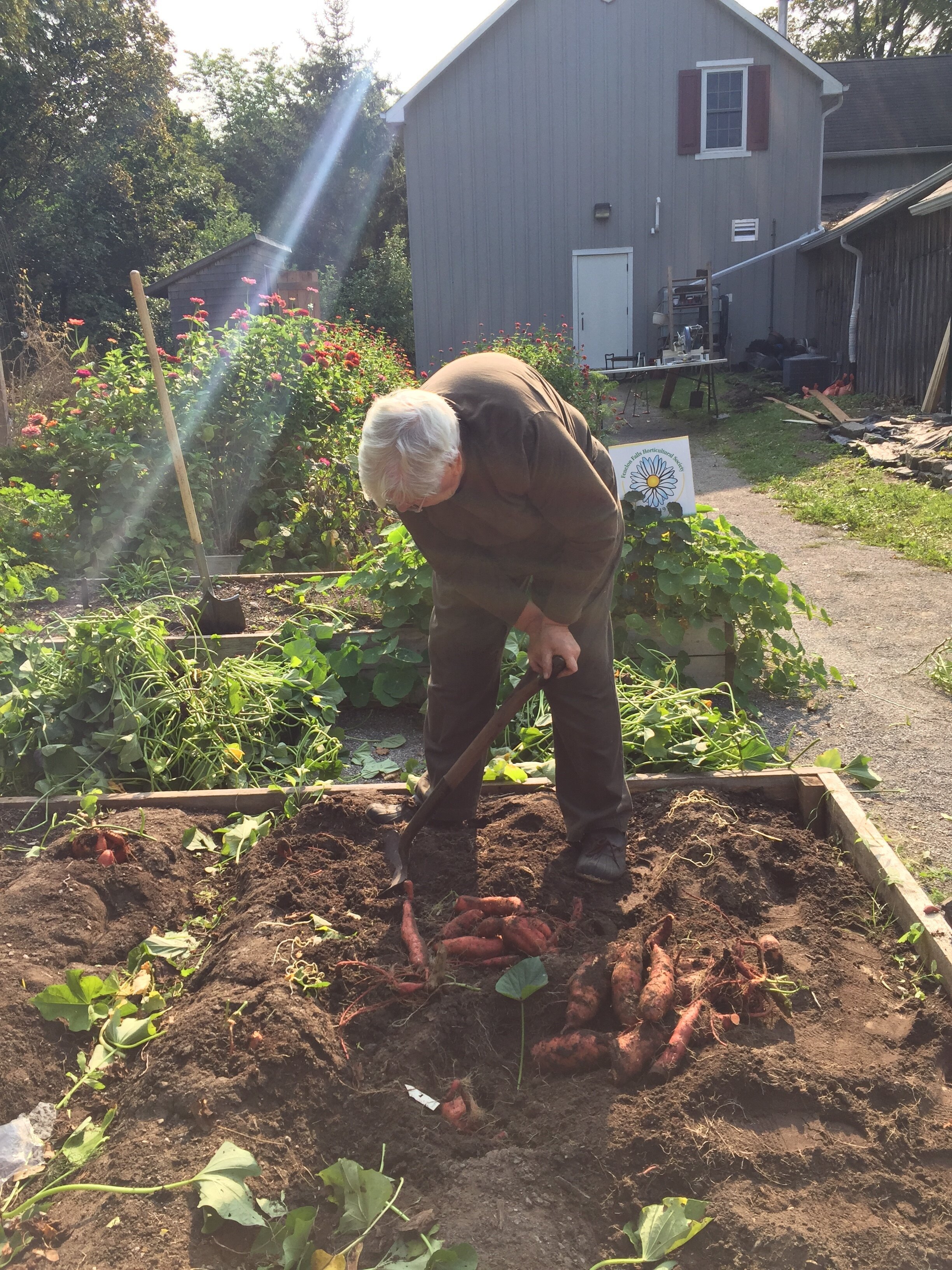Victory at the Maryboro Lodge
Article submitted by Judy Kennedy, Photos submitted by Carol Milroy
For the past four years, the Fenelon Falls Horticultural Society has partnered with the Fenelon Falls Museum to grow and provide fresh produce to our local food bank at the Salvation Army Citadel. We named it the “Victory Garden”, as our effort to take a lesson from history during the first and second world wars, when towns and cities and homeowners transformed parkland and their backyards into vegetable gardens, to support the war effort. So, on that note, here is some history of the Victory Garden.
The first year, with a great deal of assistance from Miss Carew’s students, the area for the garden was cleared of weeds and debris. Garden plots were defined by wood chip pathways and the garden was planted directly on ground level and produced about 300 pounds of veggies.
The following spring, the museum folk secured a grant that allowed us to purchase the material to build raised gardens. Once the frames were in place and filled with soil, we planted, using the method of “square foot gardening’ combined with “companion planting” to enable us to maximize production without the use of chemical fertilizers and pesticides. The gardens were tended and harvested by various members of the Horticultural Society, as well as a few local neighbours and, thanks to their help, over 500 pounds of produce was delivered to the food bank.
At the beginning of the third year, we were offered more grant money, which allowed us to build two additional 8’ by 14’ raised beds, as well as a raised bed with a trellis for climbing veggies. Another generous donation allowed us to replace the wood chips with limestone chips, which made the garden pathways handicap accessible. In spite of a very hot, dry summer, we were able to match our previous year’s harvest of just over 500 pounds.
This year, the COVID 19 situation presented us with some interesting rules for gardens in public places. Nevertheless, we began by enhancing the soil in the plots with 3 cubic yards of well-composted sheep manure, and what an improvement it made. Once the tomatoes, cabbage, and seeds were planted the garden sprang to life. Each week, everything seemed to double in size and very soon we were delivering kale, chard, and salad greens to the food bank. Once the tomatoes began to ripen there were so many that what our local food bank was not able to distribute went to the Lindsay Food Bank.
We also experimented this year with the addition of some sweet potatoes. These were planted in one of the 8’ x 14’ plots which had been hilled up in rows and covered with black plastic to provide extra heat from the sun. Holes were cut in the plastic to insert the seedlings into the soil and the plastic was well perforated to allow water to seep under the tarp. When harvest time arrived in mid- September, pulling back the tarp was like opening a Christmas present. From the twenty-four seedlings planted, the harvest weighed in at 145 pounds of glorious, plump sweet potatoes that filled five 5-gallon buckets.
This past week we also picked most of the squash, and we are thrilled to report that so far almost 750 pounds of fresh, nutritious food has been delivered to the food bank, with still more to ripen. To give some perspective to our success, the actual growing surface in the garden frames totals 872 square feet. That calculates out to an average of 0.85 pounds of produce per square foot!
Of course, all of this could not have been possible without the work of many hands, generous funding, and donations of soil, seeds and materials from many community sources, that help us in our fight against hunger in our community to provide fresh, healthy food to those in need.




